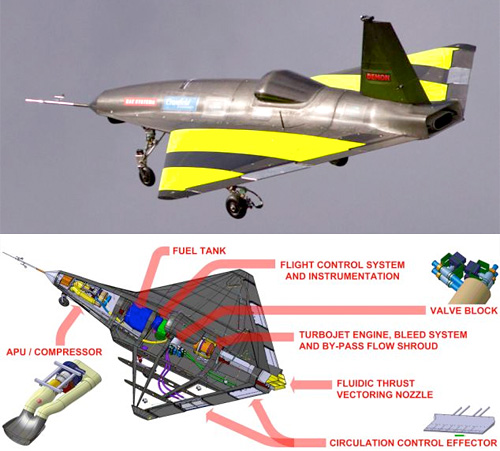
By Andrew Liszewski
A few weeks ago an experimental unmanned air vehicle called the DEMON, which was developed by BAE Systems working with 10 British universities, made aviation history by becoming the first plane to fly without the use of flaps. Now the 200lb aircraft pictured here with its 8-foot wingspan does have flaps as you can see, but those were switched off shortly after takeoff so it could fly using only its unique fluidic flight control system which uses jets of air along the trailing edge of the wing to change how the air flows over it. The results are the same as using flaps, which create higher pressure under the wings allowing aircraft to fly and bank left or right, without the added moving parts or maintenance.
Of course like the F-117 stealth fighter or the B2 bomber that came before it, the DEMON is highly reliant on advanced computer flight control systems to stay aloft, including a bank of sensors along the wing that constantly monitor and adjust the airflow keeping the craft from, well, crashing. And there’s still plenty of R&D and improvement to be done before the technologies demonstrated on the DEMON make their way onto manned aircraft, but in the long run it could definitely improve future aircraft design.
[ The Dailymail – Reinvention of flight: Unmanned plane becomes first jet in the world to fly without ‘flaps’ ] VIA [ TechEBlog ]










